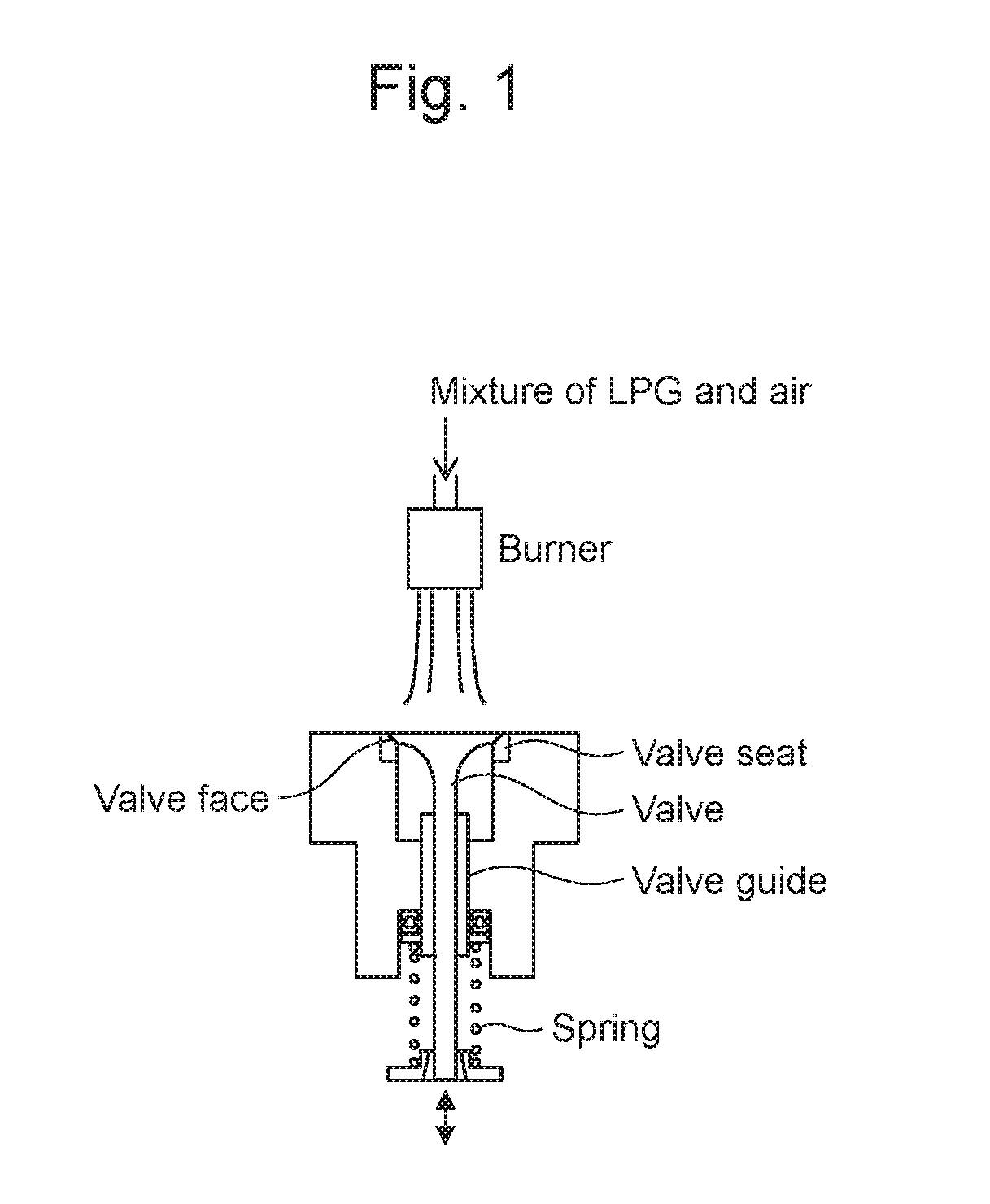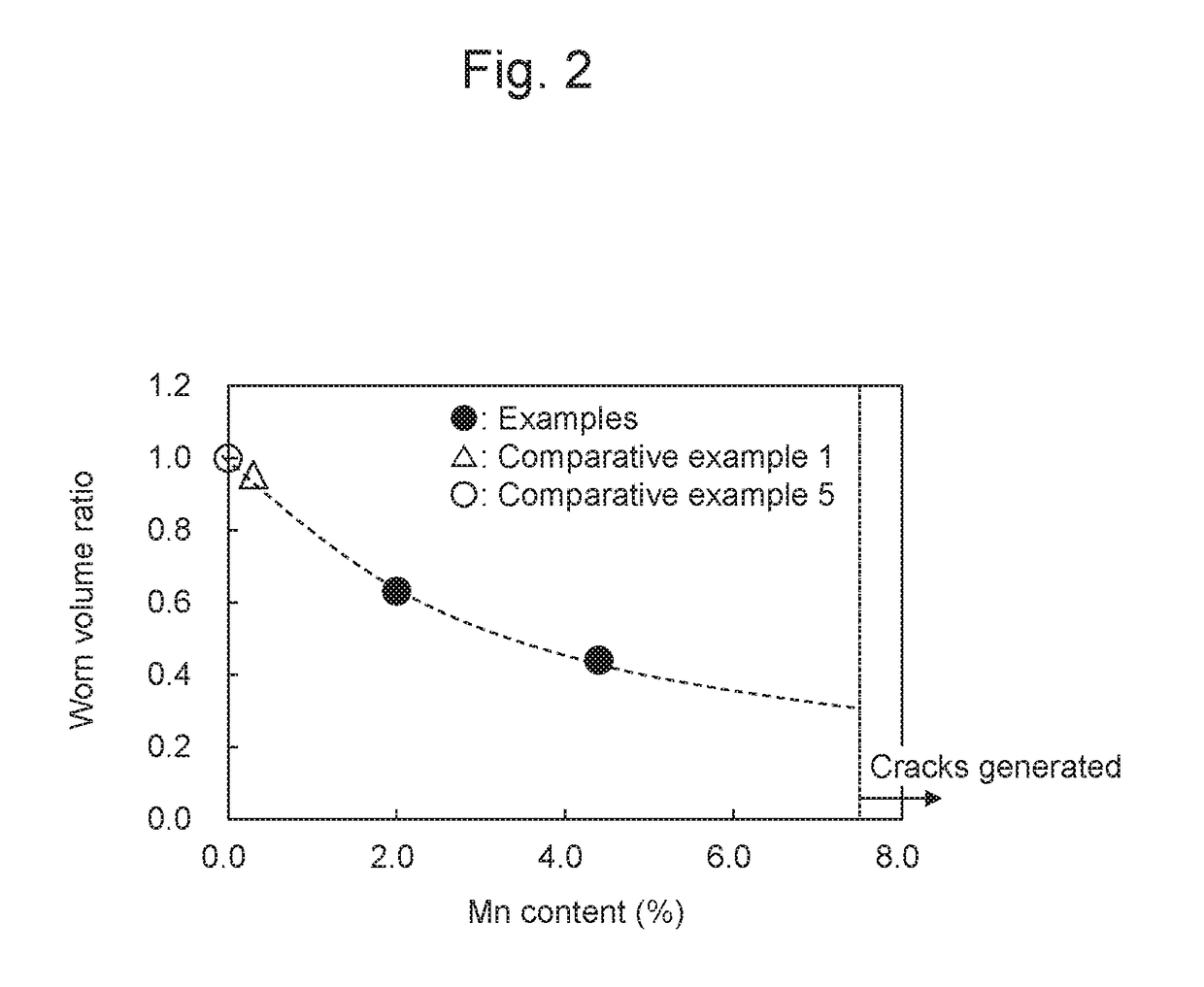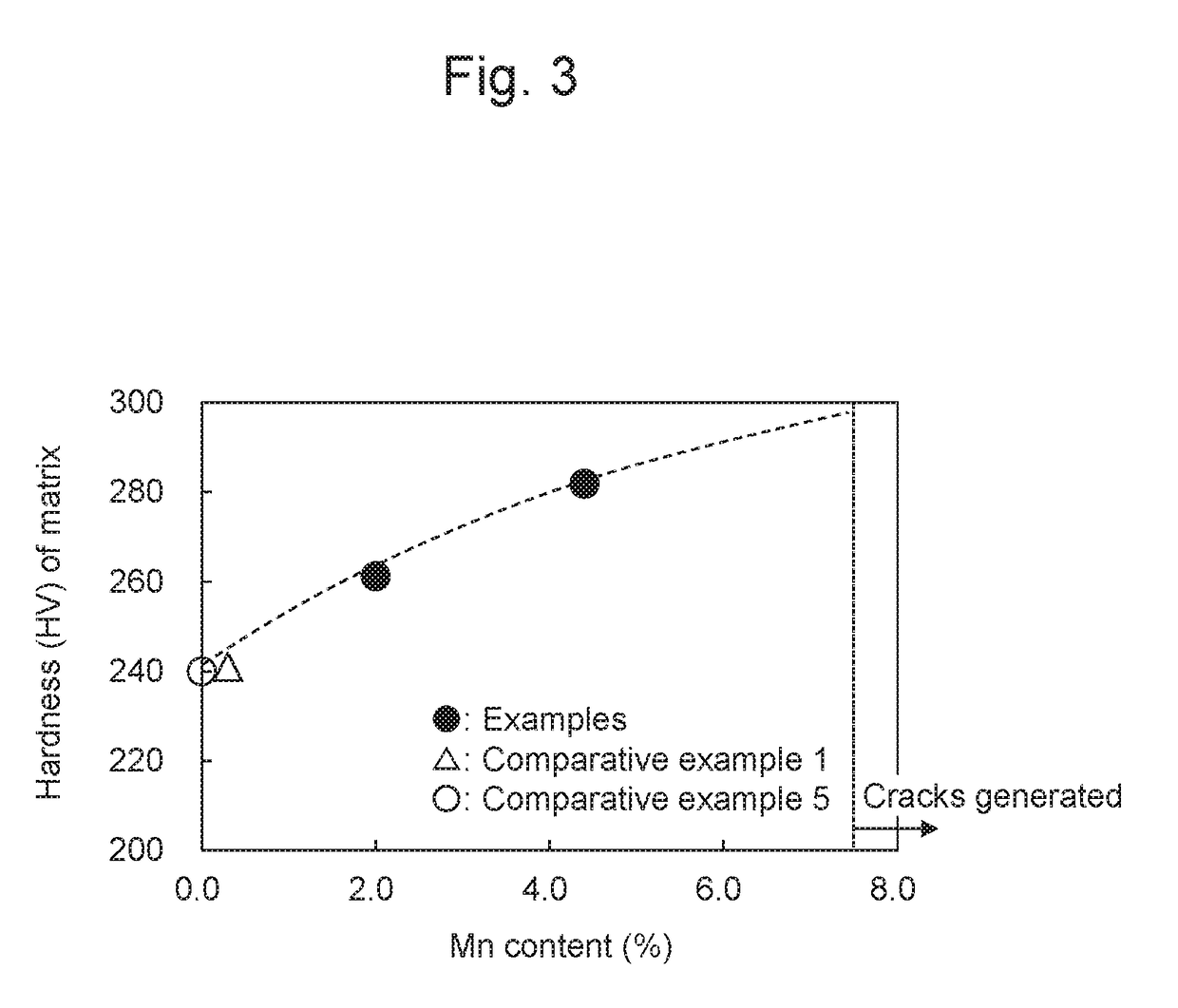Wear-resistant copper-base alloy
Active Publication Date: 2017-09-07
TOYOTA JIDOSHA KK
View PDF0 Cites 3 Cited by
- Summary
- Abstract
- Description
- Claims
- Application Information
AI Technical Summary
Benefits of technology
The patent text describes a wear-resistant copper-base alloy that has improved adhesion resistance and hardness. The alloy contains a matrix and hard particles dispersed in the matrix, with the hard particles containing niobium carbide and at least one compound selected from the group consisting of Nb—C—Mo, Nb—C—W, and Nb—C—V. The alloy also contains specific amounts of Mn and / or Sn, which improve the hardness of the matrix and the area rate of the hard particles. The alloy has excellent oxidation characteristics and can exhibit desired advantageous effects under severe engine conditions. The patent text sets the limits for each component in the alloy to optimize its properties and ensure its effectiveness.
Problems solved by technology
Under frictional wear conditions at a high temperature of over 200° C., for example, a material with a low melting point, in particular, will have adhesive wear generated thereon due to contact between metals with high possibility.
However, as the surface treatment performed is typically a thermal treatment step, there have been problems with the increased time and production cost.
Therefore, formation of an oxide film, which contributes to providing a wear resistant property, is not promoted, and adhesive wear is thus generated due to metal contact.
With the progress of such adhesive wear, the wear resistance becomes insufficient.
When the wear resistance decreases as described above, there may be cases where wear that is beyond the limit at which the valve seat can function may occur.
Specifically, adhesive wear progresses such that a plastic flow is generated in the cladding material upon metal contact with another member (counterpart member), and the cladding material is then worn by the counterpart member, resulting in excessive wear.
Therefore, when the matrix of the cladding material is weak, a plastic flow is likely to occur, and adhesive wear is thus likely to occur.
However, there have been problems in that when a given amount or more of chromium is added in order to improve the corrosion resistance and the like, the ability to form an oxide film from niobium carbide and molybdenum, or the like would decrease, and sufficient wear resistance cannot thus be obtained.
Therefore, there has been a concern that when a shortage of silicon (Si) in the base occurs, the adhesion resistance may decrease.
As described above, the conventional copper-base alloys have insufficient adhesion resistance and thus have insufficient wear resistance due to the reasons that a plastic flow is likely to occur as the ability to form an oxide film from niobium carbide, molybdenum, or the like is low, and as the matrix is weak.
Method used
the structure of the environmentally friendly knitted fabric provided by the present invention; figure 2 Flow chart of the yarn wrapping machine for environmentally friendly knitted fabrics and storage devices; image 3 Is the parameter map of the yarn covering machine
View moreImage
Smart Image Click on the blue labels to locate them in the text.
Smart ImageViewing Examples
Examples
Experimental program
Comparison scheme
Effect test
examples
[0049]Although the exemplary embodiments will be hereinafter described by way of examples, the exemplary embodiments is not limited thereto.
the structure of the environmentally friendly knitted fabric provided by the present invention; figure 2 Flow chart of the yarn wrapping machine for environmentally friendly knitted fabrics and storage devices; image 3 Is the parameter map of the yarn covering machine
Login to View More PUM
| Property | Measurement | Unit |
|---|---|---|
| Fraction | aaaaa | aaaaa |
| Fraction | aaaaa | aaaaa |
| Fraction | aaaaa | aaaaa |
Login to View More
Abstract
Provided is a copper-base alloy with excellent wear resistance. The wear-resistant copper-base alloy includes, by mass %: 5.0 to 30.0% nickel; 0.5 to 5.0% silicon; 3.0 to 20.0% iron; less than 1.0% chromium; less than or equal to 5.0% niobium; less than or equal to 2.5% carbon; 3.0 to 20.0% of at least one element selected from the group consisting of molybdenum, tungsten, and vanadium; 0.5 to 5.0% manganese and / or 0.5 to 5.0% tin; balance copper; and inevitable impurities, and has a matrix and hard particles dispersed in the matrix, when niobium is contained, the hard particles contain niobium carbide and at least one compound selected from the group consisting of Nb—C—Mo, Nb—C—W, and Nb—C—V around the niobium carbide, and when niobium is not contained, the hard particles contain at least one compound selected from the group consisting of molybdenum carbide, tungsten carbide, and vanadium carbide.
Description
CROSS-REFERENCE TO RELATED APPLICATIONS[0001]This application claims priority from Japanese patent application JP 2016-42498 filed on Mar. 4, 2016, the content of which is hereby incorporated by reference into this application.BACKGROUND[0002]Field[0003]Exemplary embodiments relates to a wear-resistant copper-base alloy.[0004]Description of Related Art[0005]Conventional copper-base alloys have been obtained through some surface treatment, such as forming an oxide film on the surface of the metal in order to avoid the problem of adhesion. Under frictional wear conditions at a high temperature of over 200° C., for example, a material with a low melting point, in particular, will have adhesive wear generated thereon due to contact between metals with high possibility. However, as the surface treatment performed is typically a thermal treatment step, there have been problems with the increased time and production cost.[0006]In particular, when a copper-base alloy is used as a cladding m...
Claims
the structure of the environmentally friendly knitted fabric provided by the present invention; figure 2 Flow chart of the yarn wrapping machine for environmentally friendly knitted fabrics and storage devices; image 3 Is the parameter map of the yarn covering machine
Login to View More Application Information
Patent Timeline
 Login to View More
Login to View More IPC IPC(8): C22C9/06F01L5/00F01L1/12
CPCC22C9/06F01L2101/00F01L5/00F01L1/12C22C9/00C22C30/02C22C30/04C22C32/0052F01L3/02F01L3/04F01L2303/00F01L2301/00
Inventor SHINOHARA, NOBUYUKIANDO, KIMIHIKOAOYAMA, HIRONORI
Owner TOYOTA JIDOSHA KK
Features
- R&D
- Intellectual Property
- Life Sciences
- Materials
- Tech Scout
Why Patsnap Eureka
- Unparalleled Data Quality
- Higher Quality Content
- 60% Fewer Hallucinations
Social media
Patsnap Eureka Blog
Learn More Browse by: Latest US Patents, China's latest patents, Technical Efficacy Thesaurus, Application Domain, Technology Topic, Popular Technical Reports.
© 2025 PatSnap. All rights reserved.Legal|Privacy policy|Modern Slavery Act Transparency Statement|Sitemap|About US| Contact US: help@patsnap.com



